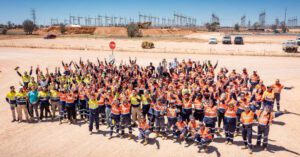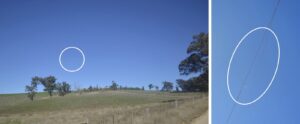The federal and state governments have struck a new deal to forge ahead with the controversial Marinus Link between the island state and the mainland, but have agreed to effectively cut the capacity of the sub-sea transmission link in half in response to a blow out in costs.
The Marinus Link – crucial to the so-called “Battery of the Nation” project – will now comprise just one 750MW sub sea link to the mainland, instead of two, and the federal government will take a bigger stake in the project to reduce the financial burden on Tasmania.
The new deal came after a blow out in costs that effectively doubled the price of the link, and led some analysts, and green campaigners to question its viability. The state government also questioned its future after losing two MPs over the project.
A joint statement on Sunday from federal energy minister Chris Bowen and Tasmania’s premier Jeremy Rockliff says the scaled down project will still cost $3 billion to $3.3 billion, potentially more than the $3 billion estimate for the entire project made just two years ago.
But Bowen says the single link will still deliver two thirds of the anticipated benefit.
“This is a game changing project for both Tasmania and the mainland and this updated agreement will not only deliver the benefits of MarinusLink, it will be cheaper to Tasmanians,” Bowen said in a statement.
At a news conference on Sunday morning, Bowen said the cost of cables is going up around the world, along with supply chain challenges.
“So, the cost has gone up. Tasmania indicated they couldn’t bear those increased costs. The Albanese Government’s going to step up and take the load,” he said.
The efforts to save the project include substantial concessional finance from the Clean Energy Finance Corporation, which is managing the federal government’s $20 Rewiring the Nation project to help deliver the multiple new transmission links deemed essential by the Australian Energy Market Operator.
The CEFC will also deliver more concessional finance to the equally controversial VNI West transmission project in Victoria (boosting its links to NSW), as part of a three way deal that includes the Victoria government.
The joint statement acknowledged that the Marinus project is struggling to compete in a global market with tight supply chains, and is facing similar inflationary pressures to other major energy and infrastructure projects around the world.
Nearly all the transmission projects identified by AEMO in its Integrated System Plan have faced cost blowouts, including the Hume Link and the project it is designed to connect to the grid, the Snowy 2.0 pumped hydro scheme, whose budget has blown out six-fold to $12 billion, although much of that is due to bad management.
The new timeline for the Marinus Link will be 2028 – or “earlier is possible” – and a decision a second 750MW sub sea link will be decided after the first stage reached financial close. However, given the cost increases and the competition from battery storage, that now seems unlikely.
The federal government will increase its equity share in the joint venture building the project to 49 per cent, reducing Tasmania’s share by nearly half to just 17.7 per cent, with Victoria’s staying at 33.3 per cent. This will significantly reduce costs to Tasmania to around $110-$117 million.
Tasmania will have the option to sell its stake to the Commonwealth once the project is commissioned. The CEFC will also provide concessional finance for other key parts of the Battery of the Nation project to ease the financial burden on Tasmania.
The two governments say Marinus will help deliver more renewable energy generation and storage to the mainland and “unlock the next wave” of renewable energy energy projects in Tasmania.
It is not immediately clear, however, just how many of the multiple large scale – some of them gigawatt scale – wind projects proposed for the island state will now be able to go ahead, given the capacity of the new link to the mainland has been cut in half from 1500MW to 750MW.
“We know that there’s no point in Tasmania getting to 100 per cent renewables if they can’t export that power,” Bowen said. “We know that Tasmania suffers energy insecurity, particularly in winter.
“And that’s not good enough for us. This project is an important project, and all the expert analysis and evidence I’ve seen supports this project being built.”
The governments said an updated economic analysis from Marinus Link Pty Ltd, which will own the project, says stage one will deliver an economic stimulus of more than $2 billion and over 2400 jobs, with just over half of these in Tasmania.
“This is a great outcome for Tasmania. It will mean jobs, economic growth, energy security and lower power prices with Tasmania investing its fair share and no more,” said Rockliff.
“I’m very pleased we’ve been able to land this on the right side of our line in the sand.”
Christine Milne, the former leader of The Greens, and now a spokesperson for the Bob Brown Foundation which has been critical of the project, was not impressed. “One for the price of two, what a bargain!” she told AAP.









